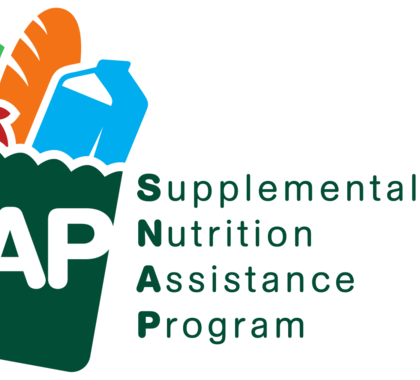The U.S. Department of Agriculture (USDA) is proposing stricter work requirements for some recipients of Supplemental Nutrition Assistance Program (SNAP) benefits, popularly known as food stamps.
The U.S. House of Representatives passed stronger work requirements in early 2018, but the year-end farm bill passed by Congress did not include the reforms the Trump administration had requested.
Agriculture Secretary Sonny Perdue announced a proposed rule in late 2018 focused on tightening SNAP’s work requirements for able-bodied adults without dependents (ABAWDs) between the ages of 18 and 49. The rule would not apply to the elderly, the disabled, or pregnant women.
The American people created SNAP to help people through difficult times, not as a lifelong income supplement, said Perdue in a press release announcing the proposed rule.
“Long-term reliance on government assistance has never been part of the American dream,” Perdue said. “As we make benefits available to those who truly need them, we must also encourage participants to take proactive steps toward self-sufficiency. Moving people to work is common-sense policy, particularly at a time when the unemployment rate is at a generational low.”
States Loaded Up on Waivers
Under current SNAP requirements, abled-bodied adults without dependents are supposed to work or participate in an employment training program at least 20 hours a week to continue to receive benefits for more than three months over a 36-month period.
States, however, may request a waiver from the time limit in areas with an unemployment rate above 10 percent or where there are “not sufficient jobs,” which current regulations primarily define as an unemployment rate 20 percent above the national average, according to the USDA press release.
“With today’s strong economy,” states the USDA press release, “that could include areas with unemployment rates of under 5 percent—a rate normally considered to be full employment.”
As a result of state waivers, nearly three-fourths (2.8 million) of the 3.8 million ABAWDs on food-stamp rolls were not working in 2016.
Failing the Target Population
Thirty-six states currently waive the work requirements for all or some of the ABAWD population, Perdue says in the USDA press release.
“These waivers weaken states’ ability to move the ABAWD population to long-term self-sufficiency because they not require ABAWDs to engage in work and work training,” said Purdue.
The Trump administration wants to ensure that work provisions are waived “only when necessary,” with the goal of encouraging states to move participants on the path to self-sufficiency, Perdue said.
Some states also stockpile waivers. States are currently allowed to waive up to 15 percent of ABAWDs from work requirements. If a state doesn’t use those waivers, they can hold on to them and use them later to go above the enrollment limits. Secretary Perdue says that California has more than 8000,000 stockpiled waivers.
State Policy Choices
Ending waiver abuse is essential to reforming SNAP, says Purdue.
“As the national unemployment rate continues to decrease, the number of ABAWD waivers in areas with low unemployment should also decrease,” said Perdue in a letter to every state governor advising them of the proposed rule.
“I strongly advise states with ABAWD waivers to review your policy choices concerning when and where to request these waivers,” Perdue said.
The proposed rule would also limit states’ ability to “gerrymander” areas, merging places with low unemployment with those with high unemployment in order for a geographical area to qualify for waivers.
The rule could be finalized this spring, after the USDA reviews written comments from the public.
Widespread Fraud
SNAP is the fourth-largest means-tested federal program, and fraud is widespread, says Mathew Glans, a policy analyst at The Heartland Institute, which publishes Budget & Tax News.
Illegal trafficking consists primarily of SNAP recipients selling their benefits for cash at food retailers, often at a discount, says Glans.
“From 2012 to 2014, according to the FDA, 35,891 food retailers nationwide illegally trafficked in more than $1 billion each year,” Glans said. “The retailers then used the card as a commodity while the SNAP recipients used the cash received illegally from retailers to buy items that cannot be purchased using SNAP funds.
“During a three-year period, 11.8 percent of the 303,522 retail stores authorized to accept SNAP benefits were involved in illegal trafficking,” said Glans.
Some states are considering legislation to tackle fraud, says Glans.
“A new bill in Pennsylvania would combat SNAP fraud by requiring violators to pay restitution of up to three times the amount of fraud committed,” Glans said.
Checking SNAP Eligibility
Granting food stamps to ineligible individuals is another common source of fraud, says Glans.
“A recent proposal in Ohio would require state officials to conduct quarterly eligibility checks using several state and federal databases, and it would expand the data used in those checks,” Glans said.
The data from SNAP recipients would be crosschecked with various records, including real estate records, tax records, state lottery winnings, state residency data, other public assistance programs, incarceration records, and immigration status reports.
“Unfortunately, these reforms did not make it out of the Ohio legislature,” Glans said.
Bonner R. Cohen, Ph.D. ([email protected]) is a senior fellow at the National Center for Public Policy Research.
Official Connection
U.S. Secretary of Agriculture Sonny Perdue: https://www.usda.gov/our-agency/about-usda/our-secretary
Internet Info
“Supplemental Nutrition Assistance Program: Requirements for Able-Bodied Adults without Dependents, Proposed Rule,” Food and Nutrition Service, U.S. Department of Agriculture, December 20, 2018: https://heartland.org/publications-resources/publications/usda-proposed-snap-rule
Matthew Glans, “Research & Commentary: Pennsylvania Looks to Clamp Down on SNAP Fraud,” The Heartland Institute, October 24, 2018: https://heartland.org/publications-resources/publications/research–commentary-pennsylvania-looks-to-clamp-down-on-snap-fraud



